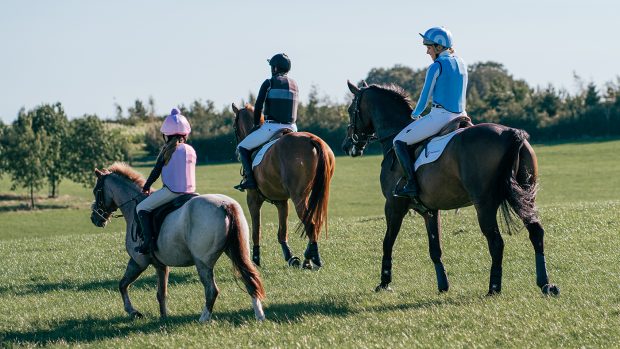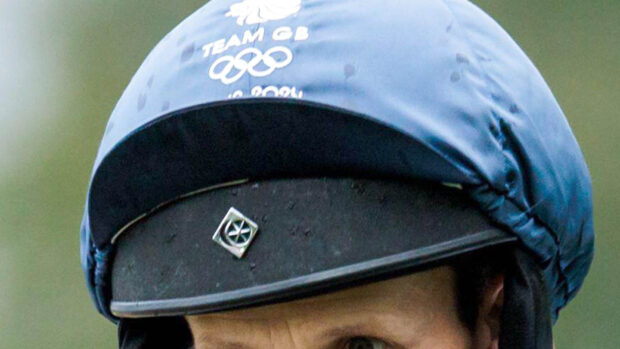An air jacket or body protector can make all the difference in a fall, but knowing how they work and when to wear them is key. They’re often grouped together as rider safety gear, but the protection they offer is very different.
So, which one do you actually need, and when should you wear both? Here’s everything you need to know about choosing between the best air jackets and the best body protectors – or using them together – depending on how and what you ride.
Air jacket vs body protector: What’s the difference?
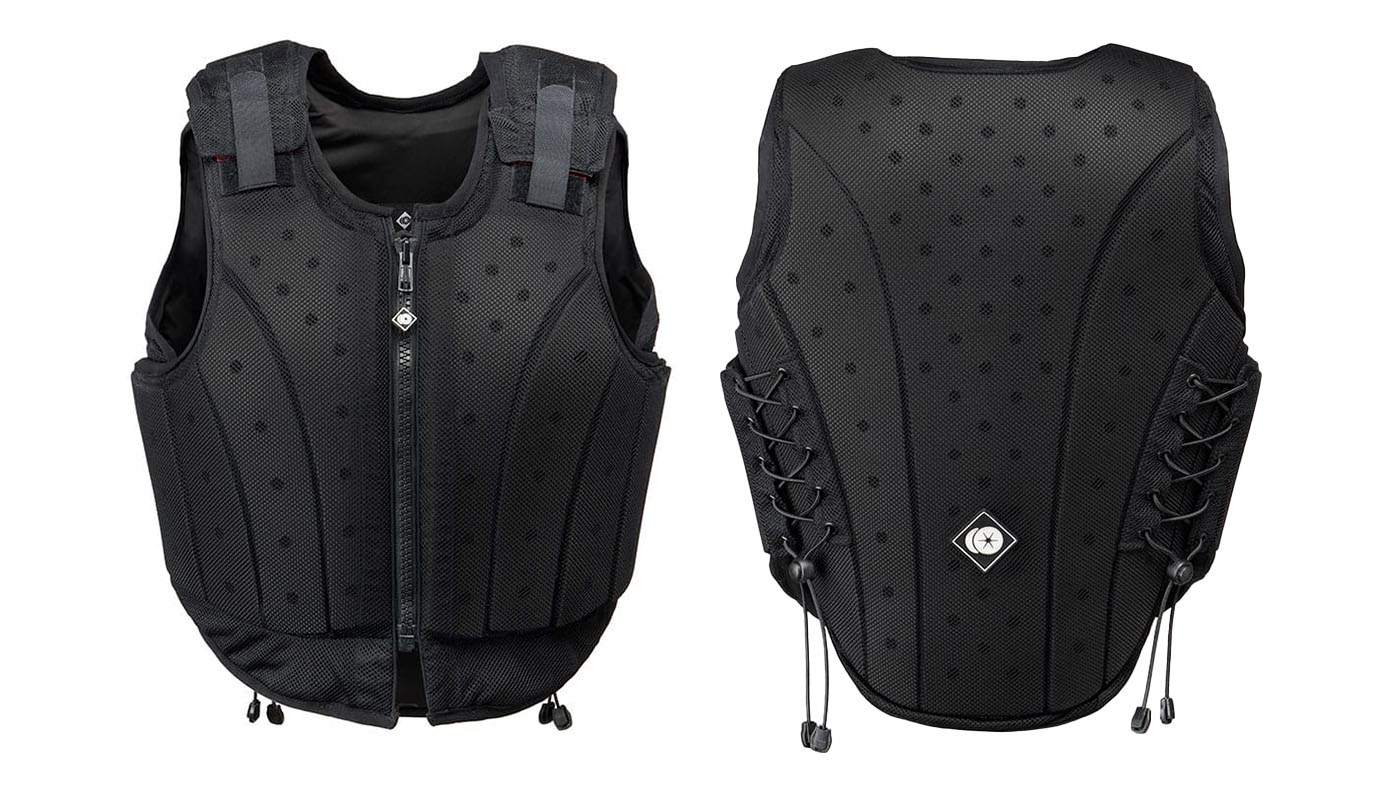
A body protector is a foam-filled vest designed to absorb impact and reduce blunt trauma in the event of a fall, kick, or collision. It offers constant, passive protection to your back, chest, ribs and internal organs. Once it’s on, it’s ready – no activation needed.
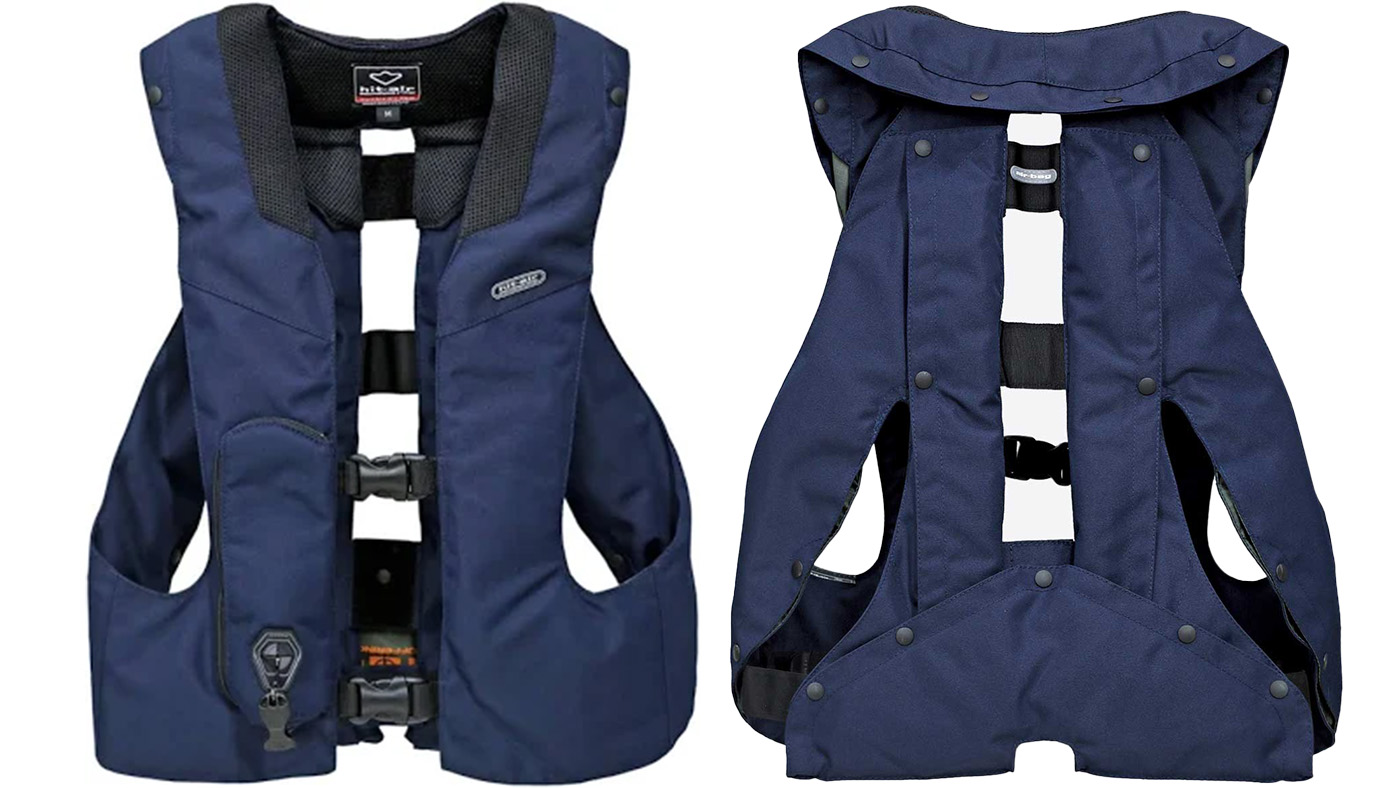
By contrast, an air jacket is an inflatable vest that only deploys when triggered. It’s worn over your clothing (and usually over a body protector) and attaches to the saddle via a lanyard. If the rider is thrown from the saddle, the lanyard pulls a cord which activates a CO₂ canister, inflating the jacket in a fraction of a second. This creates an air cushion around key areas including the spine, neck, pelvis and sometimes the chest.
So while a body protector reduces impact force using dense materials, an air jacket reduces it by creating a pressurised air buffer – but only after a fall is in progress.
Which should you wear – and when?
Body protectors are essential for high-risk riding and mandatory in certain competitions, such as:
- Cross-country (and are mandatory in British Eventing for the cross-country phase, and over solid fences in arena eventing)
- Riding young, green or unpredictable horses
- Schooling in potentially hazardous situations
To meet current competition rules, your body protector must be BETA Level 3 (2018) standard – look for the blue label. Most governing bodies won’t accept older standards (e.g. purple 2009) or lower protection levels. It’s also worth noting that body protectors should be replaced every three to five years, even if they haven’t been involved in a fall.

Air jackets, while offering excellent protection for certain injuries (such as spinal compression or internal bruising), are not a substitute for a BETA-approved body protector in any discipline where one is required, like eventing. They’re an optional, additional layer.
Air jackets are commonly worn by:
- Eventers, over the top of a body protector for cross-country
- Riders schooling or hacking who want extra peace of mind
- Experienced riders working with sensitive or high-level horses
- Riders with previous injury history seeking more upper-body protection
Some air jackets offer additional neck and pelvis protection that body protectors don’t. But remember: they only work if they inflate – and that requires separation from the saddle. In situations where you fall with your horse, or aren’t fully separated, some may not trigger in time.
Pros and cons
Body protectors:
✔ Constant protection – no need to “arm” or trigger
✔ Approved for use in affiliated competitions
✔ Protects torso, ribs and organs from impact and kicks
✔ Offers coverage even in close falls or entanglements
✖ Can feel bulky or warm, especially in hot weather
✖ Some riders find them restrictive, especially to start with
Air jackets:
✔ Lightweight and unobtrusive when not deployed
✔ Inflates to offer neck, spine, chest and pelvis protection
✔ Often more comfortable for long hours in the saddle
✔ Can reduce whiplash-type injuries
✖ Must be worn with a body protector in most competitions
✖ Requires rearming after deployment (usually by replacing the gas canister)
✖ Won’t inflate if the rider isn’t fully separated from the horse
Air jacket vs body protector: How to choose
Choosing the right safety gear depends on the type of riding you’re doing – and whether you’re competing or not.
If your discipline requires a BETA Level 3 body protector, that’s non-negotiable. Air jackets can be worn over the top for additional protection, but they don’t meet the criteria on their own and won’t be accepted in competition without a body protector underneath.
For everyday riding where safety gear is optional, the choice depends on what you’re doing and the level of protection you want. Some riders stick with a body protector for its consistent coverage, others go for the lighter feel of an air jacket, knowing it only activates during a fall, and many choose to wear both. There’s also the option of a back protector for riders who want minimal coverage without the bulk.
Fit is critical, especially if you’re combining an air jacket with a body protector. They need to work together without restricting movement or interfering with inflation. Most brands provide compatibility guidelines, and a professional fitting can make a big difference. If you can, try the gear on while mounted to check that everything moves with you in the saddle, and check that lanyards are properly adjusted.
Body protectors and air jackets offer different types of protection – one constant, one reactive – and together, they cover more scenarios than either can alone. If you’re unsure what’s right for you, a BETA-trained retailer can help you make a smart, safe choice.
- To stay up to date with all the breaking news from major shows throughout 2025, subscribe to the Horse & Hound website
You may also be interested in:

10 body protectors that meet the current standards

Best air jackets for the ultimate protection, comfort and performance – options to suit every rider
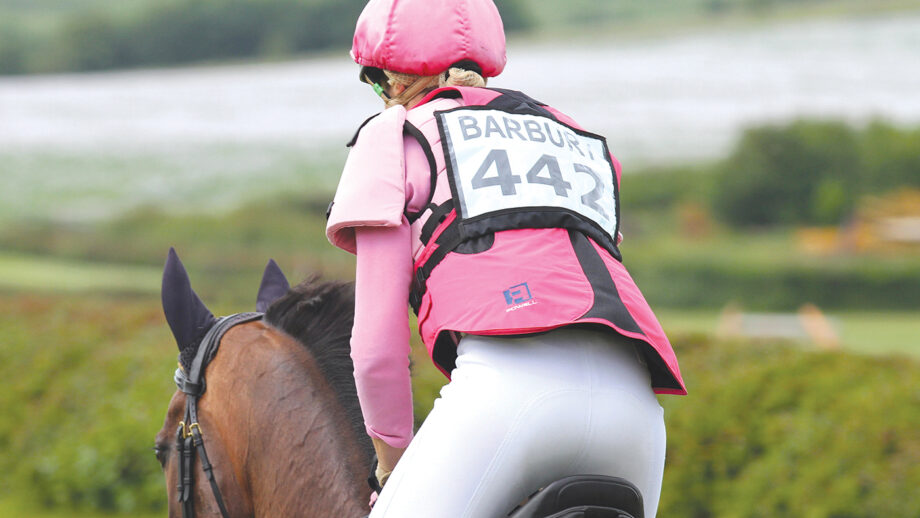
Body protectors vs back protectors: what’s the difference – and which one do you need?

12 body protectors for children that are up to Pony Club and riding school standards

Subscribe to Horse & Hound magazine today – and enjoy unlimited website access all year round




